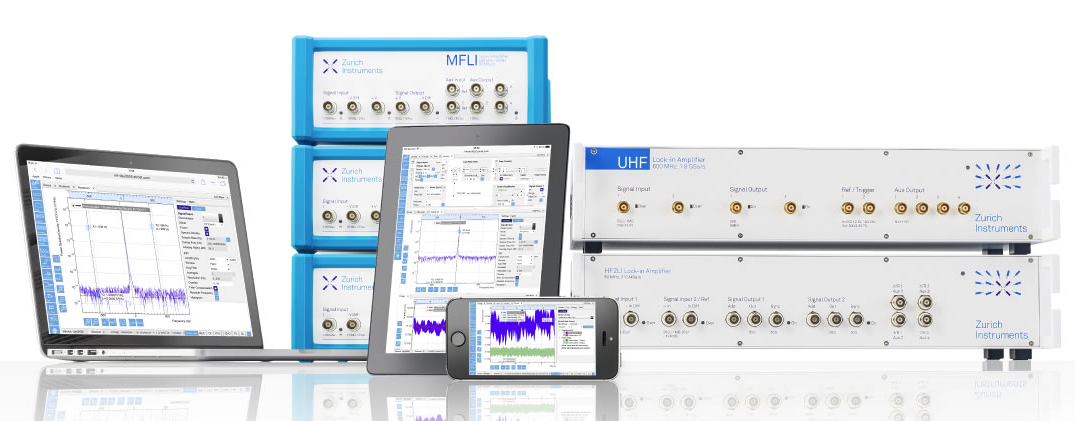
In this article, Sadik Hafizovic, CEO and co-founder of Zurich Instruments tells the story of the start-up. He explains why he started the company despite doubts of some sceptics, how the start-up manages to grow without venture capital and that to his surprise advertisements in glossy publications have an impact.
This year more than fifty Zinians are celebrating the tenth year of Zurich Instruments' existence. It is ten exciting years that have tested us with their distinct challenges but bringing innumerable memorable success stories supporting our customers. The question that I am personally asked most often in this context concerns the startup years - how did it all begin? I'd like to take this opportunity to tell you how Zurich Instruments went from a project in a lab to a company whose products are in the labs of hundreds of the leading scientific institutes worldwide, employs more than fifty people, and is growing revenues at a rate of 20% per year. Along the way I will highlight some lessons learned about building a successful, self-sustained academic spinoff company in a 60-year-old and established industry.
University life
During my Ph.D. studies at ETH Zurich, Flavio Heer, today CTO of Zurich Instruments, and myself developed CMOS-based neurochips that interfaced with living neurons. In that context we also performed impedance spectroscopy on single cells, which we used lock-in amplifiers for. This taught us first-hand that the instrumentation market didn't offer what many researchers needed. So we build our own lock-in amplifier. Within one summer-student project, we had a solution that demonstrated feasibility. A second student project defined the design for productive use. We then had the recipe for a lock-in that outperformed anything available on the market. My childhood dream to start a company of my own was sparked: I could see an opportunity for an academic spin-off, albeit not as bleeding-edge as my Ph.D. research.
"But anybody can do it!"
I started promoting the idea with my colleagues and supervisors, Prof. Henry Baltes and Prof. Andreas Hierlemann. They were very supportive, as were my colleagues. But not everyone agreed about the viability of a business developing lock-in amplifiers, a product based on off-the-shelf components and software. Many of my peers pointed out that it didn’t require years of research that would yield an IP-protected technology. It was something that “anybody could do” and was "easy to copy", they said, and at the time I couldn't refute that.
However what I was certain of was that, if ETH Zurich represented typical users, I knew exactly what kind of lock-in people actually wanted and that I could sell it to them - the market was there. A further fact that we really only came to appreciate a few years later is that a high-end lock-in actually would consume dozens of engineering person-years to reach the level of perfection we had in mind - and that again was something that not anybody was willing to do.
It takes more than one person
I also knew I couldn't possibly do this lock-in startup myself. Luckily for the startup, my close friend and Ph.D. teammate Flavio Heer was still in his job search after graduating. Even though he checked out a number of opportunities in engineering, they generally failed to excite him - they just weren't the type of challenge that a person like Flavio was attracted to. A startup company making lock-in amplifiers was a worthy challenge and we agreed that we would give it a year to see how far we could go.
It didn't take long before Beat Hofstetter, a diploma student from the school of arts in Zurich whose arts-meet-science project I supervised, took an interest in our plans too. He completed the founder team: Flavio, a physicist by education and hard-core circuit designer by destiny, Beat, schooled in design but a programmer at heart and myself, an engineer by education with a passion for software, signal processing and digital design.
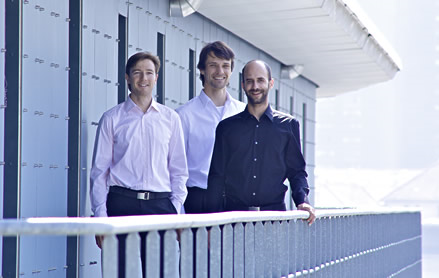
Boot-strapping
In April 2008 the three of us incorporated Zurich Instruments AG with a share capital of 100,000 CHF (roughly 100k USD) from our own, families' and friends' pockets. By then we were going full-steam in the Swiss startup ecosystem. We soaked up all the advice that we could get from the various institutions. We also checked out diverse foundations that sponsor business competitions and we were able to add the Venture Kick prize worth 130,000 CHF, the deVigier prize worth 100,000 CHF and the Volkswirtschaftsstiftung yielding a loan of 100,000 CHF. In addition, we secured a CTI (now Innosuisse) project at ETH that sponsored three positions for 1.5 years at ETH to work on the technology to be marketed by Zurich Instruments AG.
Other than business plan writing and pitching at the competitions, we hid from the world and with great focus developed the fastest digital lock-in amplifier in the world: the HF2LI, 50 MHz Lock-in Amplifier. We were quick and started selling a first version of the HF2LI only one year after incorporation - a milestone that we absolutely wanted to reach before we would involve investors. It turned out that with our super-slim organization and the sales picking up we actually didn't need investors - a circumstance that still holds today.
By now, you may have noticed a certain lack of marketing and sales experience? Very true and the first hire would change this. It was 2008, a crisis year in high-tech industry, which gave us the chance to get Stephan Koch as VP M&S. Stephan was eager for an adventure after having spent many years in a big international corporation and took the leap from a company with many thousands of colleagues to a three-people company that was looking forward to getting its first revenues.
The new kid on the block
As we grew to eight people, we had to choose our battles very carefully. Maintaining a narrow focus was essential. We stayed in our home turf - the academic research market. We went to as many scientific conferences to exhibit our lock-in amplifiers as we could afford. The product received excellent feedback, which in turn fuelled our drive to persevere.
Here I would like to share an experience that took me by surprise during the first year on the market. It illustrates how trust is essential to win new customers, how branding establishes trust and that traditional advertising is (still) an effective way to build a brand. Generally, people that had never heard of Zurich Instruments confronted us with a set of questions like, "Where are you from?", "Since when are you in the market?", "How many instruments have you sold?", "How many people are you?".
Advertisments work
If, however, they had seen one of our advertisements in glossy publications, like Physics Today, the conversation would be entirely different: "I saw your lock-in, can you tell me more about it?" or "I have heard of Zurich Instruments! How many demodulators do your lock-ins have?". The trust-building with prospective customers was seemingly jump-started by a trust transfer from Physics Today to Zurich Instruments. This experience was truly a surprise. Needless to say, this trust that we won also generated expectations about the products and company, which we worked hard to fulfill.
Today we still stick to the strategy of advertising in reputable journals and we visit more than 50 conferences every year. Over time our website would grow in significance too, and turn into the single most important instrument to advertize our products.
Going direct
Another surprise and a seeming setback was that it was almost impossible to outsource sales. We thought of ourselves as expert designers, not as expert salespeople, so we sought distribution partners. But they were not willing to invest in the establishment of an unknown brand even when we had products that could be pitched as delivering ten times the performance for only twice the price.
This rejection taught us that we had a high-end and high-value proposition, but which required highly skilled people that would actually understand the customer's science. We learned to sell directly based on value, providing the best customer service we could. Most distributors however prefer to sell on lowest price, so that we had to search long to find some partners that would satisfy our high requirements. We then went into a close collaboration-mode so that our partners can still tap on Zurich Instruments' application scientists. Today the R&D and the M&S departments are of comparable size and the company strategy is to go direct whenever that is an option.
Going international
We are convinced that being close to our customers in the entire world is the right strategy for Zurich Instruments even as we expand. To this end we have an office in France, a subsidiary in Shanghai and we are about to open another subsidiary in the Boston area. The new challenge that this brings along is to make Chinese and American versions of Zurich Instruments that preserve the distinctive Zurich Instruments DNA but at the same time integrate into different cultures and business systems. To get this right turns out to be a significant investment not only in terms of money but also in terms of management attention. Still, we are convinced that the higher quality of interaction with our customers justifies the investment and I am very happy that I do not have to rely on the consent of investors to pursue this long-term strategy.
The road ahead
We are looking forward to becoming a 100-person company within a few years. The accompanying changes in the organization are on-going and continuous. On the product side, we now have three platforms: Lock-in Amplifiers, Impedance Analyzers and Quantum Computing Systems. All three are doing great and are references in their respective fields.
I believe we have achieved the original vision to become the technological leader in the lock-in amplifier industry. The new vision is to offer the first commercial quantum control system, also known as "quantum stack", on the market. We entered a collaboration with QuTech at TU Delft and QuDev at ETH Zurich to help develop reference-setting quantum products. The first visible result is the recently launched HDAWG, a high-density arbitrary waveform generator.
I hope our startup story is interesting to you and that you could draw some inspiration from it. I found, and still find, my work at Zurich Instruments very rewarding. Next to being surrounded by a fantastic team of people within the company, I am also surrounded by outstanding people outside of the company. Our customers are doing incredibly interesting and important things. We are grateful and happy to be part of their missions. Thank you all for making Zurich Instruments possible!
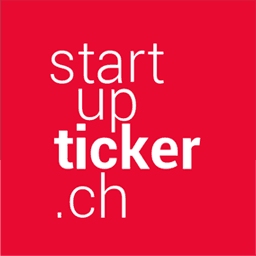

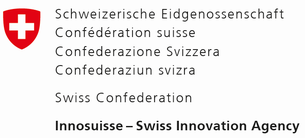
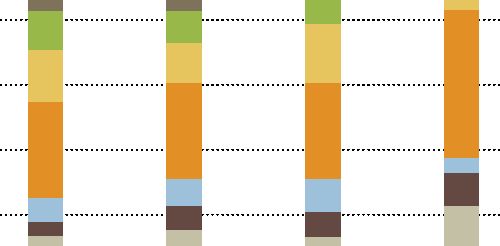

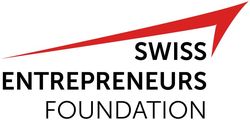


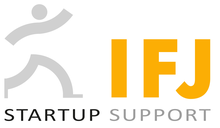




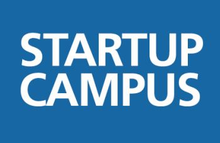



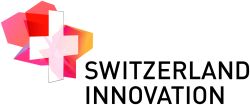
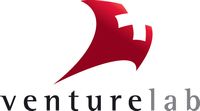









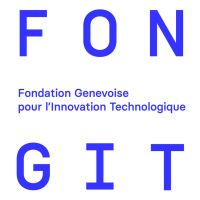






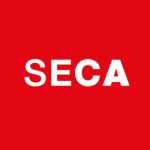


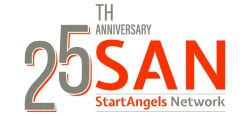
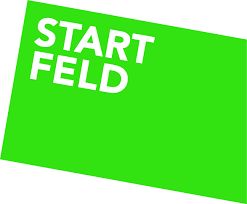
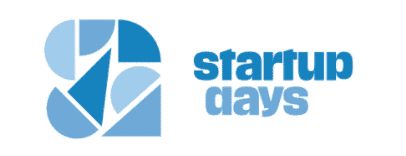








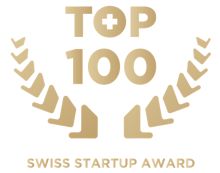





Please login or sign up to comment.
Commenting guidelines